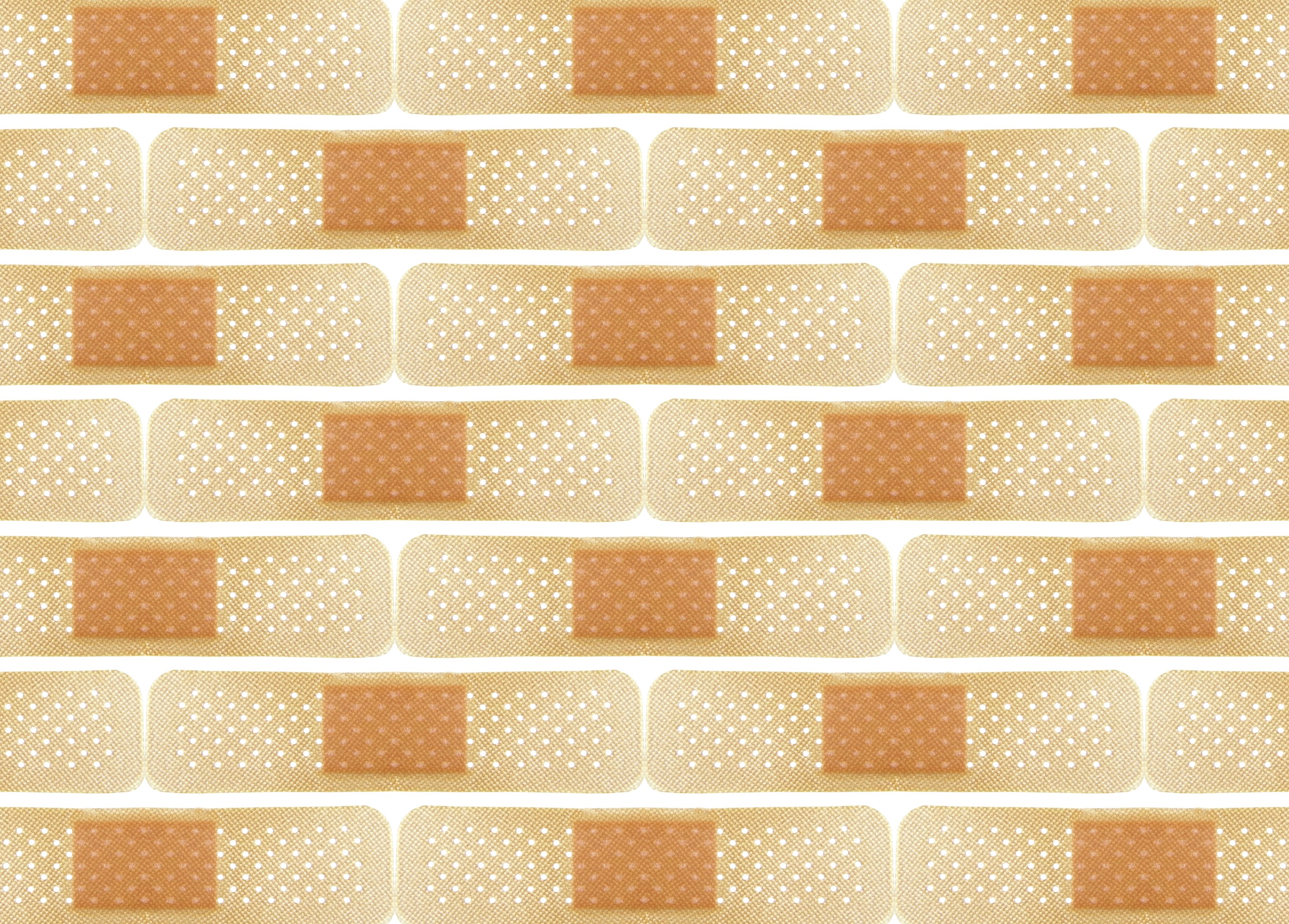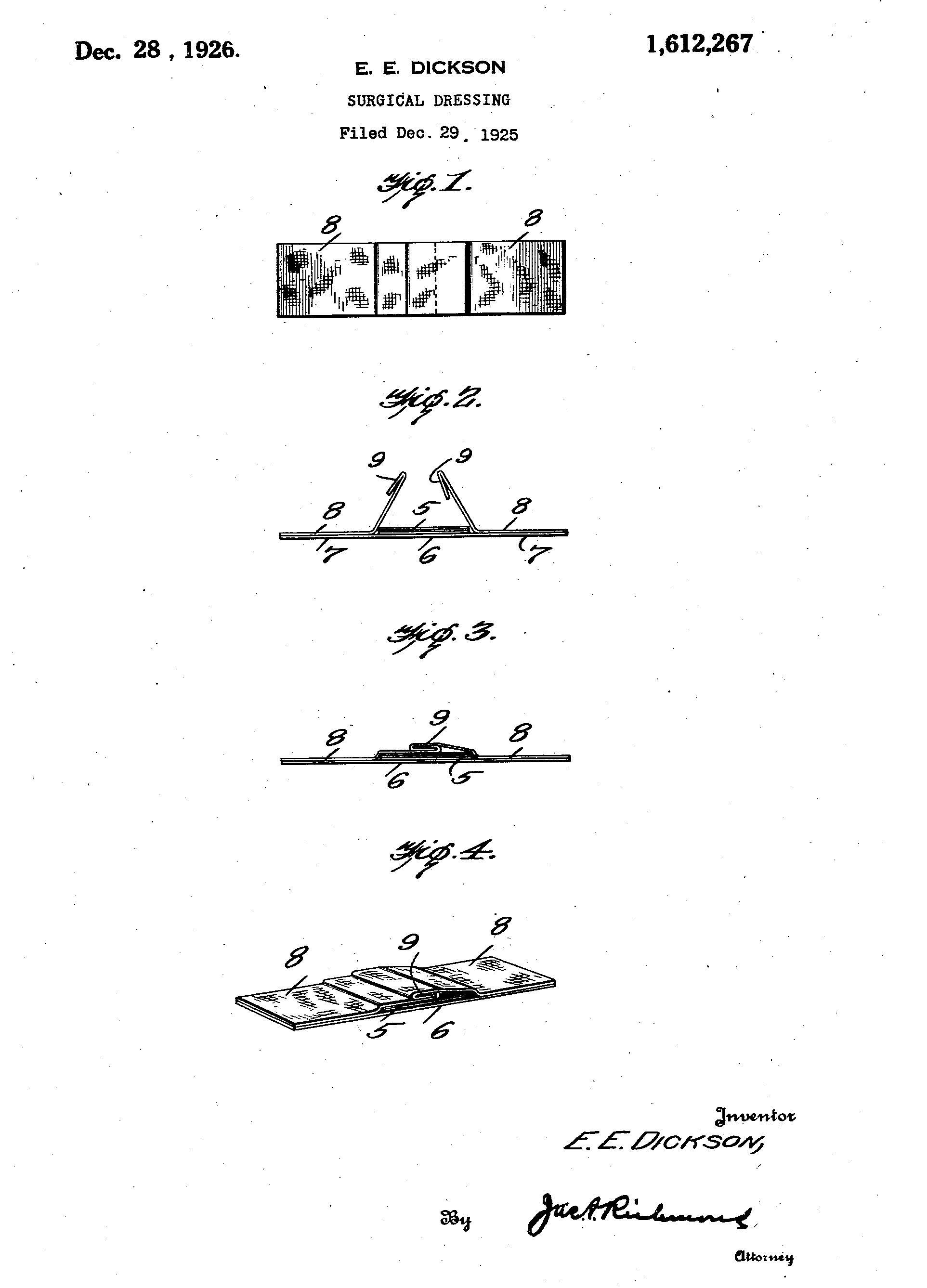Before the Band-Aid, People Used Honey and Sugar to Wrap Wounds
 (Photo: superdumb/shutterstock.com)
(Photo: superdumb/shutterstock.com)
Blood is a terrible thing to waste, and for centuries, the ways to stop blood from leaving the body were inefficient at best and not exactly easy to use.
In the time of ancient Egypt, honey was used in wrapping wounds. Later on, sugar was used for similar reasons. Hippocrates, the noted Greek physician whose name is directly tied to the Hippocratic Oath, was known to treat ulcers with wine and cover them with fig leaves.
But it wasn’t until 1920, when the First World War was long over, that we finally had an effective bandage for simple injuries that didn’t need to be stitched. One evening, a man who worked as a cotton-buyer for Johnson & Johnson spotted a problem that his wife was having and came up with one of the most brilliant solutions that the world had ever seen.
Earle Dickson was perhaps the perfect person to invent the Band-Aid. He worked for a medical supply company, he knew how to get access to a ton of cotton, and he had someone in his life who really needed them. That person was his new wife, Josephine.
 Achilles bandaging Patroclus, c500BC. (Photo: Public Domain/WikiCommons)
Achilles bandaging Patroclus, c500BC. (Photo: Public Domain/WikiCommons)
Working in the kitchen, she would get cuts constantly from all the knives and kitchen tools she had to work with. “Like most new brides, Mrs. Earle Dickson, of New Brunswick, N.J., soon learned that hot pots and pans produced nasty burns on delicate hands,” began an article in Kiplinger’s Personal Finance. While they’d tape up her cuts with cotton balls, this proved time-consuming and imperfect.
But Earle didn’t give up—he came up with a process to secure strips of cotton to surgical tape. First placing the surgical tape upside down, he took the cotton gauze, placed it in the middle of the tape, and secured it using crinoline fabric, a material better known for its usage in dresses. By combining the two materials, he could easily cut the tape into pieces and ensure that the cotton bandages stayed secure without much fuss.
And when he told his superiors about his invention, they ran with it almost immediately—and soon enough, Earle had a patent on his simple-but-brilliant idea.
 Earle Dickson’s 1929 patent for the band-aid. (Photo: Google Patents)
Earle Dickson’s 1929 patent for the band-aid. (Photo: Google Patents)
It took a while to get things moving, however, because the cotton strips, initially, were made by hand, which made them expensive. Also, they were too large, over 17 inches long and more than two inches wide. Eventually, Johnson & Johnson created a machine to specifically make Band-Aids, which allowed them to make smaller bandages that could treat minor blisters, burns, and cuts.
There was just one problem: The bandages weren’t selling. So the marketers at Johnson & Johnson decided to hand them out to Boy Scout troops around the country, free of charge. The logic in this decision was perfect—it introduced parents everywhere to the new product, which it turned out they needed. Band-Aids have saved countless pints of blood, and maybe a few lives, since that canny move.
In a way, though, the company’s success worked out a little too well. While the bandages went on to help billions of people, it ensured that Band-Aids would eventually go the way of aspirin and Kleenex—a brand whose overwhelming recognition led to it being used for pretty much every other kind of tape-on bandage. Nonetheless, the company maintains a huge market share for their product—a Companies and Markets report found that, in 2012, the Band-Aid brand had a 38 percent market share for all wound care products in the U.S., along with a 64 percent share for adhesive bandages.
 Variations of Band-Aid packaging from the 20th century. (Photo: Courtesy Johnson & Johnson)
Variations of Band-Aid packaging from the 20th century. (Photo: Courtesy Johnson & Johnson)
The Band-Aid is a great tool, but it’s not perfect—as anyone who has ever removed a bandage from a hairy arm or leg can tell you. Fortunately, science has come a long way since Earle Dickson found an inventive way to impress his new wife.
For the past couple decades, scientists have been trying to design bandages that can help seal wounds, not just protect them from the world. They’ve also been working on a type of computerized bandage that can tell the wearer how the injury is healing.
Now, if you could make bandages that clot just like blood, imagine how quickly you could stop a wound from bleeding. Indeed, the the U.S. military and the Red Cross have focused on this sealant strategy–in the form of bandages and dressings–for the last couple of decades. In 2008, the military began using QuikClot, a body dressing that uses the chemical kaolin to help speed up the clotting process, and it’s probably saved a lot of lives on the front lines.
Even more ambitious, however, is the plan that researchers have for flexible bioelectronics, a technology that’s being touted as something of a replacement for the band-aid. These bandages would go far beyond what Dickson’s invention was able to offer, giving people with chronic wounds like ulcers an easy way to track the treatment and understand what’s actually happening.
“Current wound care or band-aid technology is designed to protect the wound area from environmental assault,” Harvard associate professor Reza Abdi told the National Science Foundation of the technology. “However, it is a simple technology, which does not provide any information about the state of the wound.”
 Cosmas and Damian dressing a chest wound, 1748, by Antoine de Favray. (Photo: Wellcome Images, London)
Cosmas and Damian dressing a chest wound, 1748, by Antoine de Favray. (Photo: Wellcome Images, London)
Just think: what if our bandages weren’t simply devices that we wore on wounds and constantly had the urge to lift up to check what was underneath, but actually told us how the wound was doing?
Another technology, which is being worked on by a number of universities, would help stop one of the most dangerous parts of the bandage process—the removal portion, which can expose an open sore to disease. The bandage, which would be made out of liquid, would change color if, for whatever reason, the wound isn’t healing correctly.
“Most of the technology was already there,” Massachusetts General Hospital’s Conor Evans told Scientific American last year. “We’re trying to translate it and make it applicable and simple to use in real clinical situations.”
And then, because there’s a crowdfunding project for everything, there’s also an bandage-style wearable that would provide a zap to an area that’s suffering from pain. That project, Cur, would replace physical therapists by detecting pain-causing changes in the body electronically and adjusting. One problem: the FDA hasn’t approved it yet.
For whatever reason, some of these new technologies, despite their obvious benefits, have not been met with much enthusiasm by the pharmaceutical companies. In the case of QuikClot, its blood-stopping factor is actually an odd detriment. It “sounds too good to be true,” company CEO Brian Herrman told Hartford Business in 2010.
Where are the goody bags for Boy Scouts when you need them?
 A version of this post originally appeared on Tedium, a twice-weekly newsletter that hunts for the end of the long tail
A version of this post originally appeared on Tedium, a twice-weekly newsletter that hunts for the end of the long tail



Follow us on Twitter to get the latest on the world's hidden wonders.
Like us on Facebook to get the latest on the world's hidden wonders.
Follow us on Twitter Like us on Facebook